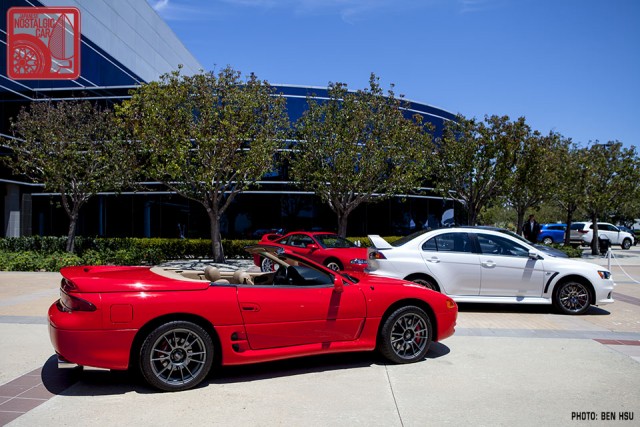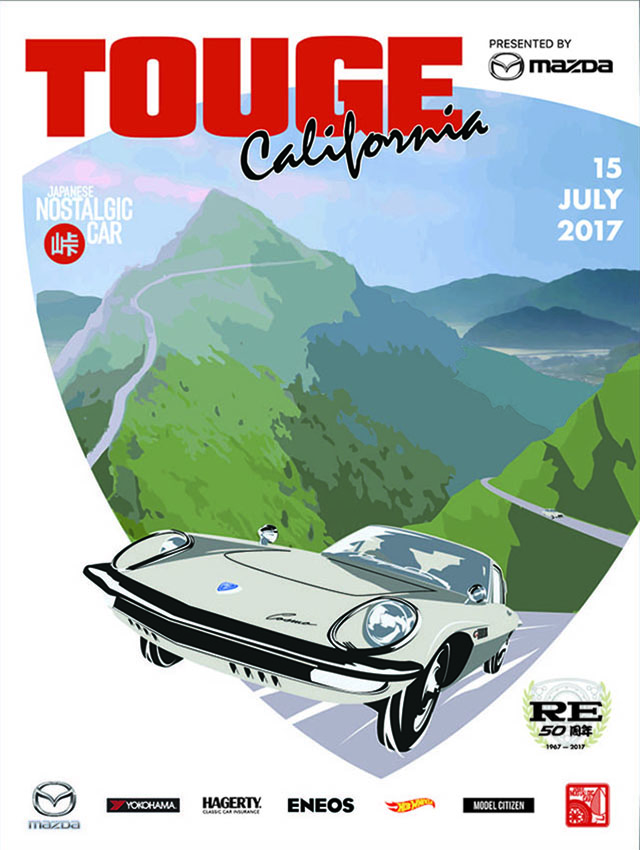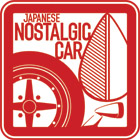What happens when a marque dies? Not that we have anything particular on the mind; it’s just a random topic that came up around the JNC water cooler the other day. Some of us believe that the lack of connection to a living company means that people will eventually lose interest in the brand’s cars, even the classics. Others believe that the certainty those classics will never be revived or supported makes them even more sought-after. Which side are you on?
When a marque dies, do its classics lose their luster or become more legendary?
The most entertaining comment by next week will receive a prize. Scroll down to see the winner of last week’s QotW, “What’s your favorite automotive manga or comic?“.







There are many long defunct car makers whose cars are still shining bright in the eyes of collectors. Yes many of them were high end cars, Packard, Stutz, Duesenberg, Auburn, Pegaso, Isotto Fraschini, Avions Voison, Delahay, Talbot, Invicta, Bristol, Cunningham, Allard, etc…
What does change are tastes. My theory for what drives most collectors of “every day” type cars is that they all want the car they couldn’t afford when they were in High School. Hence the affection for American Muscle Cars that is still popular, but fading. Also, interest in the early “Brass Era” cars is falling off a cliff. They are often difficult to operate, Model T I’m looking at you, or are simply not fast enough to run on modern roads. Modern enthusiasts want a turn key driving experience, with as little fiddling with their cars as possible.
Like I said, tastes change over time, and in the end only the rarest, highest trim level, or best performing models, and open cars, will be the ones still around,A Toyota 2000 GT, sure, but Toyota Sienna? Not a chance.
Nobody in the western world would “remember” Prince Motors if not for the Skyline they gave birth to. Even then, those who remember are those who went through the trouble of reading about the start of the legacy, not the average GTR fanboy. I cannot really remember a marque that I never interacted with, but I know of it.
We have recent history of that phenomenon, with Mercury meeting the reaper. Speaking about posh fords for old folks, anyone remembers Merkur? Ha! Edsel made history for all the wrong reasons, but history nonetheless so even if it were to vanish from car-nuts memory, those books about marketing will remember!
Even more lately was Pontiac, the phoenix being shot down as it was trying to spread its firebird’s wings once more with cool RWD offerings. Gone in 2010, 2011? Try asking your average teenager if they remember Pontiac. If they struggle to, give them a hint like “Pontiac was the P of GM’s BOP division, Buick-Oldsmobile-Pontiac! Remember Oldsmobile?” Ha! Saturn? Geo? Oakland? Hahaha!
Isuzu’s and Suzuki’s departure in north america is kind of recent too, but they never were really mainstream so even with the cool cars they made, like the Impulse and the Swift GTI, they were forgotten quite quickly, and we do not often meet fans of those.
If Nissan makes friendly with the french revolutionary’s favorite tool, the marque will shine ever brighter in our eyes as the one who fell, and if we are fangirls and fanboys enough, maybe our children will also live and breathe Nissan, have one for their first car, perhaps even collect one or two. Their kids after that? Even if they are car-nuts, these will be long forgotten.
It gets worse if Nissan gets absorbed into Honda, since Honda does not need it at all. I feel Honda will plunder the heritage for anything worthwhile and throw the rest away. No Honda GTR will be made to come close to their almighty Type R badge. We might see a Z of some sort since the Z has a stronger image than their S2000 over here. The GTR badge could get thrown on something to make it sportier, à-la M-badge, to bring some cachet to Acura. A Ralliart AWD Civic Wagovan? All that will water down Nissan’s heritage and make it all less worthy to remember except for the die-hard fans.
A weird thing is that videogames of our generation will forever serve as history books for the cool cars they made, but modern videogames preservation is a problem to look after in its own way.
When a marque dies, it becomes legendary for one generation, the lived-through-it generation, then it fades into obscurity. If it left a worthwhile heritage, it should be remembered for the long run, live forever in history books and kept in museums.
But even car museums have to make room eventually.
I believe that sometimes, the disappearance of a car manufacturer has a positive effect on the value of surviving classics. Look at what happened right after WWII – Talbot Lago, Delahaye, Delage and Bugatti all slowly died. One of their contemporary competitors, Bentley survived. Existing late 40s/early 50s examples of these cars EXCEPT Bentley are all extremely valuable even though Bentley was only building about 800 – 850 cars a year then, their cars, while technologically and stylistically the equal, are not nearly so valuable today.
What matters is how relevant that manufacturer was when they existed. If they made poor quality and no competition history, or nothing that separates them from the mundane, they will be nothing more than an anecdote in the future.
Being a manufacturer of luxury cars or sports cars – you had better be noteworthy, and accomplished in the public eye. A good example is Tucker cars, they made a car for everyone – and should be relegated to history as a bust. No hollywood actors or LeMans wins to endorse them as a manufacturer, but they were Innovative and safety driven in the 40’s, when this was frowned upon – So much so that the bigger manufacturers saw them as a threat so serious they had to shut him down.
Tucker made 50 cars and the remaining examples are worth 7 figures. Reminding us all it’s not as much what you do, but how you do it that matters
Maybe, I think in this hypothetical scenario I have decided to compose and mention it right here, if Toyota and Honda were to forge / form a joint alliance and thus have the senior carmaker (Toyota) to acquire shares in Renault (Group) and Stellantis – which contains Peugeot, Citroen, Fiat, Jeep and Mitsubishi’s former senior partner now junior player Chrysler – instead of having us to watch Nissan (a partner of Renault in the Renault Nissan Mitsubishi alliance) thinking of its plan to ally with Honda, then if that were to exist / happen, Toyota’s fellow compatriots like Honda / Acura, Nissan / Infiniti and Mitsubishi Motors (as well as Daihatsu, Hino Motors Subaru, Mazda, Suzuki and Isuzu) may either just go out of business and / or replace three of them with a sole-surviving Toyota for examples. (In that case, Renault sells more cars currently in its home market Europe in contrast to Nissan, with the Renault Clio aka Renault Lutecia in Japan still being one of the best-selling and successful subcompact cars in the European market since its 1990 debut, thus it even spawned a crossover brother called Renault Captur whose current model is also sold as the Mitsubishi ASX.)
But at least, while the Renault, Peugeot, Jeep and the rest of Stellantis brands’ names maintains their existences – except that Dacia is mainly focused on Europe (plus having a majority market presence in Morocco) and the rest like Alpine doing the same way, past carmakers with links to those companies like the former Chrysler Europe / Chrysler UK (formerly Rootes Group and Simca) and Autobianchi (Fiat) brands have models to be that interesting, Lancia – whose current market position has been Euro-centric as its models are – had interesting past models like Fulvia, Stratos and Delta, and best of all, that marque (Lancia) would have been better off to shut itself down just like Opel and its UK market-only twin Vauxhall.
In conclusion, as I may say that if Honda, Nissan, Mitsubishi and the rest of its compatriots – except for Toyota – were all substituted or went bankrupt in favor of something, unless if we judge by the fact that its also because of the Hyundai Motor Group (which also includes Kia and Genesis) from South Korea for example has already been thriving well than the rest of Japan’s car manufacturers – as given with the fact that most Japanese marques are already absent on South Korean roads too, then since Honda for ex. has been not well-known for cars to be made for rough conditions, rebadging Dacia cars based on Renault hardware and shared with Nissan like Duster as Honda products may either support the Romanian brand’s absence in markets where Honda thrives as Toyota or even have people to overlook it… (Now it may explain how safe it was to say that the Nissan GT-R recently ended its life along with the fact that Nissan formerly Datsun is already in crisis, then its because there’s quite more to offer from the Europeans as Sweden’s Volvo and the late Saab is included too.)
Whether a marque is forgotten or becomes legend depends on the era of the vehicle, its position in the market, or the emotion the marque and models elicit. Why does a marque like Packard, who went defunct 67 years ago, still command a premium in the classic car market? It was prestigious marque owned by the rich and famous including movie starts, royalty–the Emperor of Japan had a fleet of Packards, and the rich and social elite. It lost its cache after World War 2 but still managed to turn out luxury cars before it ended. That resonated with people then and the elegant styling of many of the 1920s and 1930s Packards elicits a response be it emotional or admiration today. Many were also preserved and treated as much more than a daily driver as they were expensive when new.
On the flip side, Mercury was a fading star when it ended production. It was a brand that Ford struggled to define over time (senior Ford or junior Lincoln) and then cannibalized sales with the Thunderbird, the LTD, Eddie Bauer Explorer and Country Squire Wagon. I will take the controversial position that Pontiac was fading when it was shut down in 2009. Yes they had introduced the G8, the Solstice and the G6 convertible but they were struggling to find a postion in the market. Neither of these two brands had produced an aspirational model in a while which lead to declining market share and brand equity. They occupy a different market position than Packard or Stuz so that makes a difference. Both have collectable models–the first Cougar and the GTO and Firebird–but the decline went on too long for. younger generation to carry a torch.
I
You are absolutely right about Mercury, and I would add that Lincoln is still failing to find its personality, its spice, what makes it different against the other pseudo-luxury and luxury brands. Lincoln right now is what Mercury should have been, upmarket Fords with a nautical theme.
But for Pontiac, they were the excitement branch for a long time, but the bread and butter cars were nothing more than badges and different body panels on completed Chevrolets, they did not engineer any excidement in their cars since they lost the Fiero. Some Firebirds could have the vette engine, but I think you could also spec it in the Camaro so once again, nothing gained by going to Pontiac. Their later offering, especially after the closure of Saturn, were more bespoke to them and they offered some sporty and sports cars, and just for that I feel they will be remembered for longer than Oldsmobile and the others.
Charger 500 sounds interesting, shame it’s not easy to find.
It seems to have been published in 1990, when Nissan had in fact just created a real twin-turbo V8 engine, the VRH, albeit only for racing. The basic engine design was however later productionised by Ricardo for McLaren, and powers most of their cars to this day.
So someone should find a four-door R31 and a crashed McLaren 720, and create a real ‘Fujumi Taxi’.
Saab died on top of their game, or at least while still cranking out good cars and are still pretty common where i live, even to the point of having a fully operational Saab garage/dealer near me.
Oldsmobile on the other hand was pretty far from their former glory when it was lights out and it shows, whenever you see one these days it’s either a restored classic from 20-40 years before their demise or it’s an Alero that’s got that amphetamine-chique to it…
if let’s say Nissan or Mitsubishi were to go belly up tomorrow we’d have very little recent enthusiast cars to remember them by so i think we’ll have more of an Oldsmobile than a Saab situation when excrement makes contact with the ventilation installation.
What do you know, 20-40 years before the current lineup we had the Evo, GTO, FTO, Skyline, Silvia and some of the fairest Fairladies to ever grace the streets.
it’s the circle of life i’m afraid.